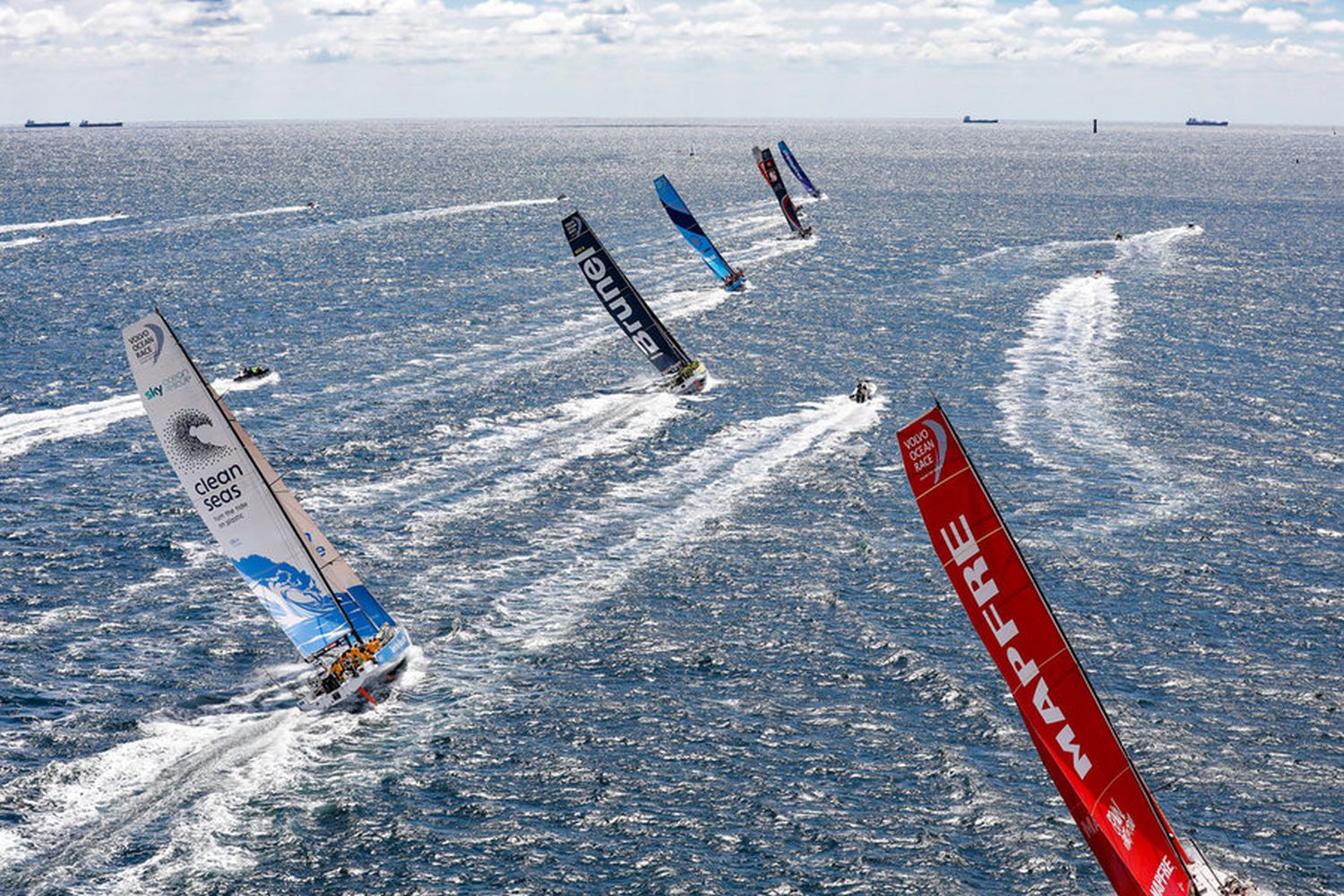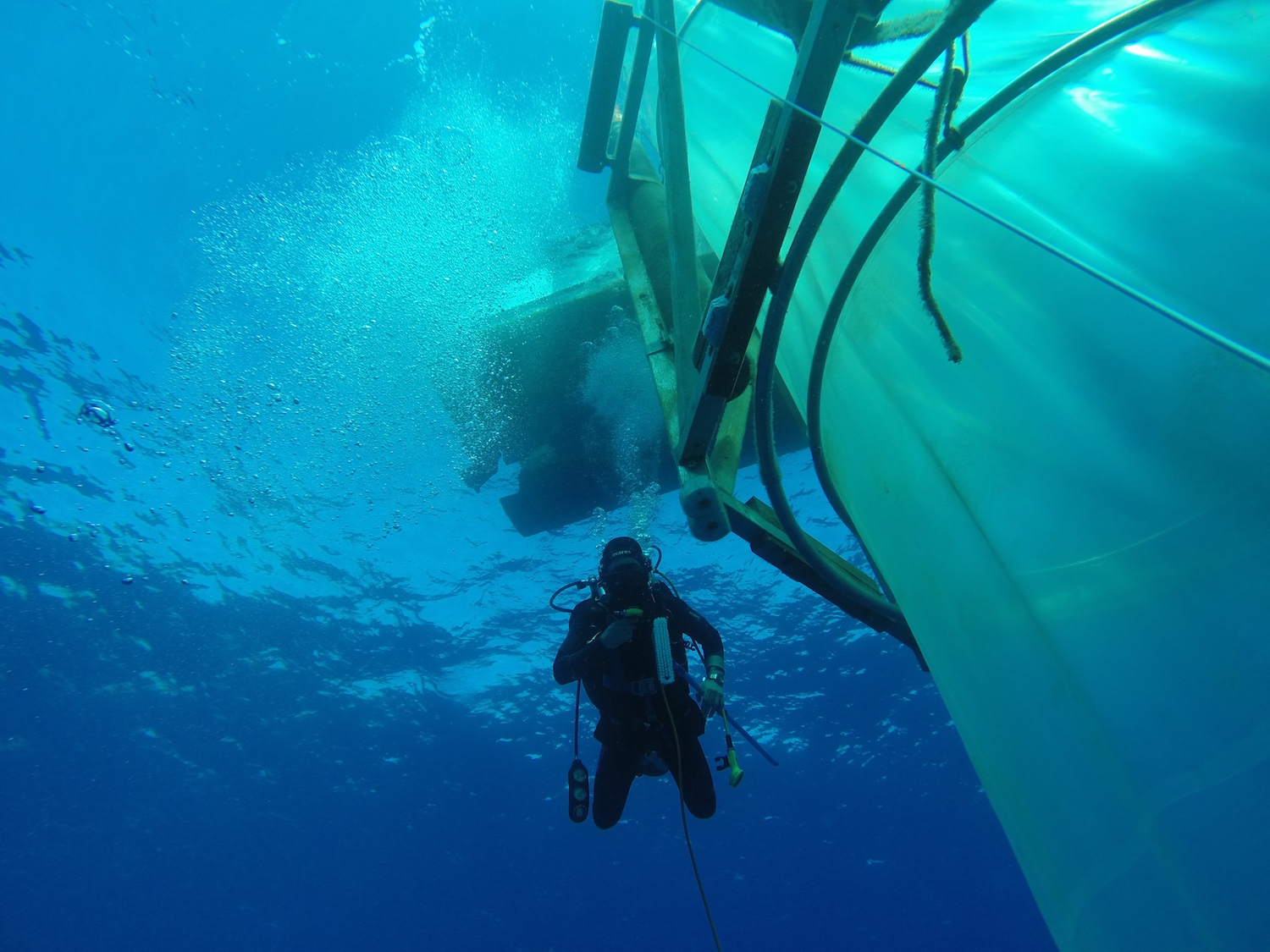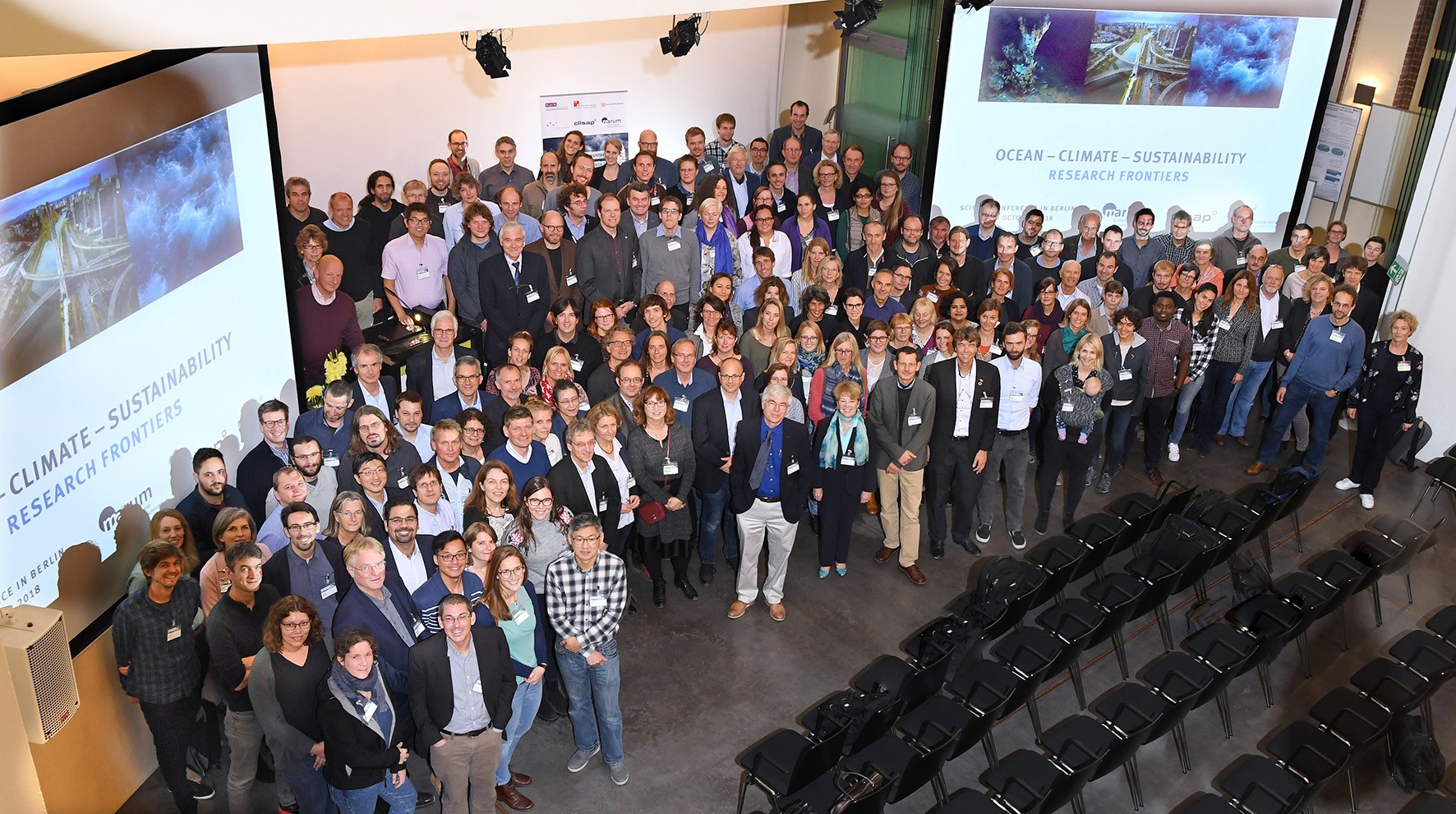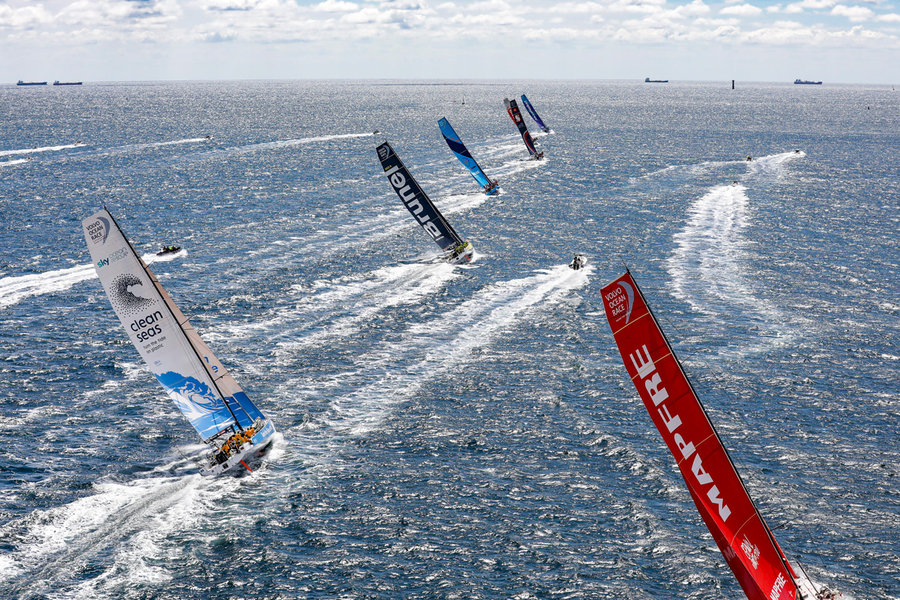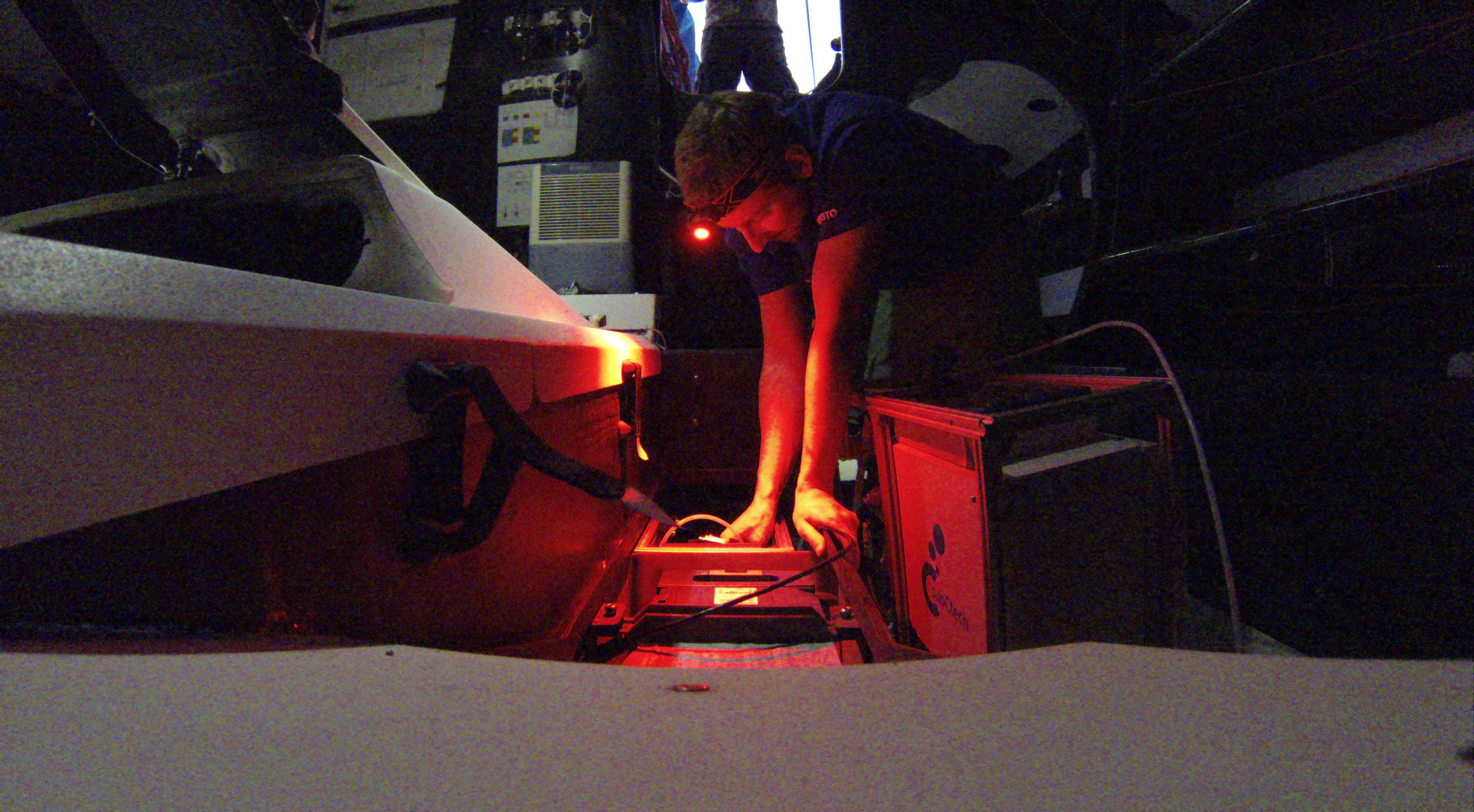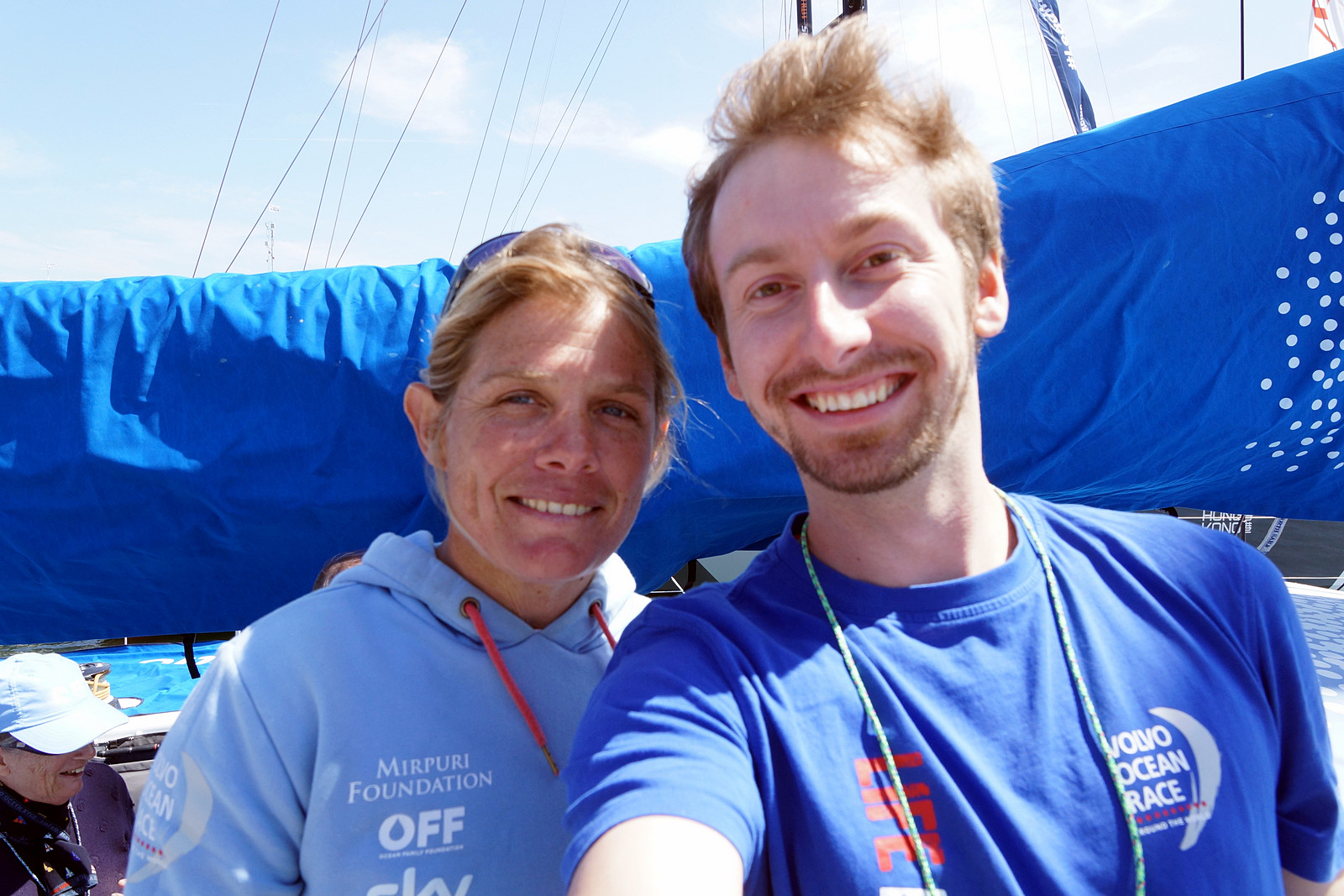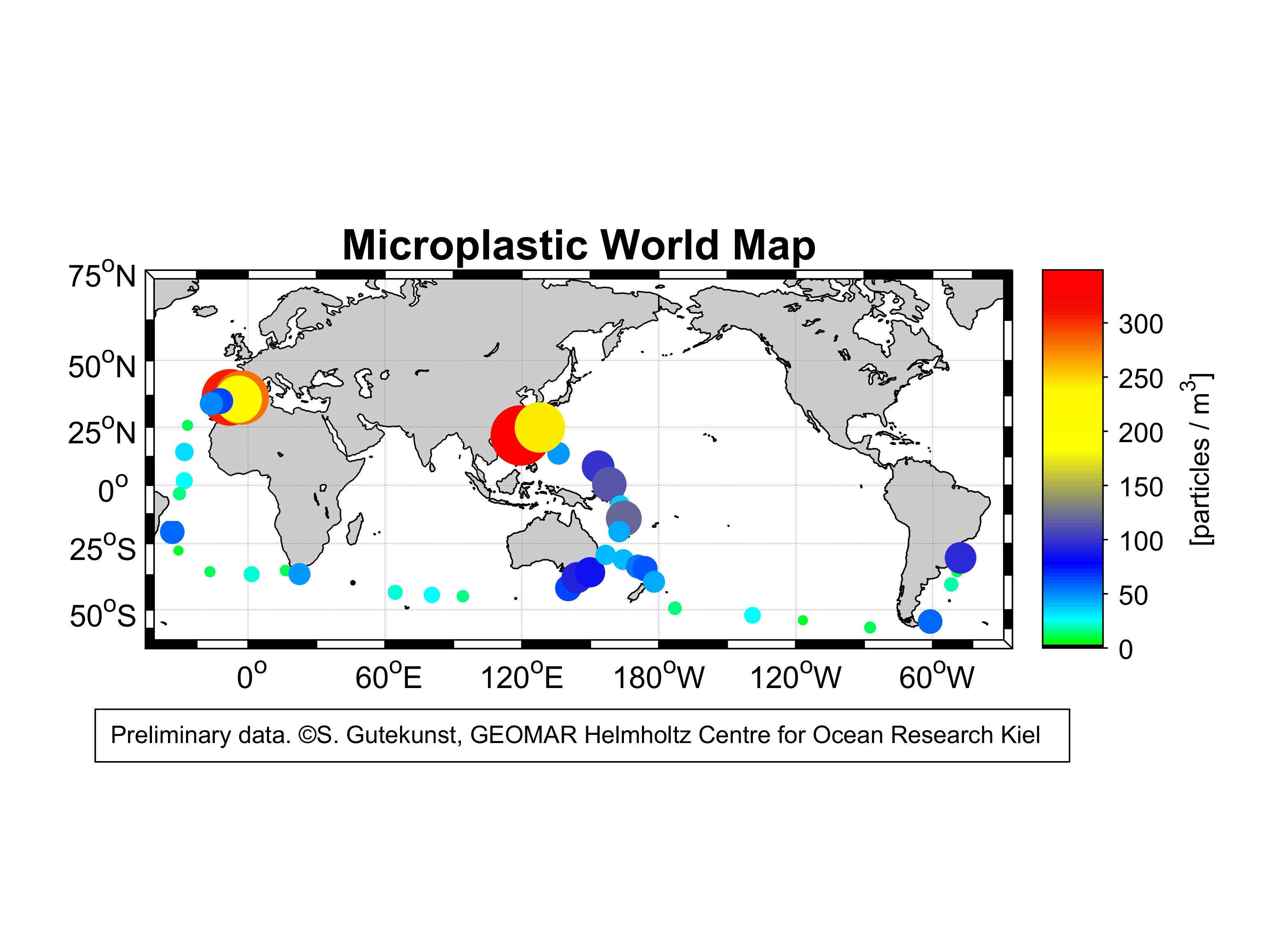This was the closest finish in the history of the Volvo Ocean Race. Eight months and 45,000 nautical miles (about 83,000 kilometers) after the start in Alicante (Spain), Team Dongfeng won the race around the world last weekend only 100 nautical miles before the final destination, The Hague (Netherlands). But no matter the final rankings—for the marine chemist Dr. Toste Tanhua from the GEOMAR Helmholtz Centre for Ocean Research Kiel, the race was definitely a success.
With the support of the Kiel Cluster of Excellence "The FutureOcean", Dr. Tanhua has been able to use two of the participating yachts, the boat "Turn the Tide on Plastic" and the boat "AkzoNobel", as measuring platforms to collected important environmental data in the most remote regions of the oceans. "Among other things, we now can track the distribution of microplastics in the ocean along the entire route of the regatta, including regions that have not been previously searched for plastic," says Dr. Tanhua at the end of the race.
The preliminary analysis of the data shows that even at the place in the ocean that is farthest away from the nearest land, the so-called Point Nemo in the South Pacific, microplastic can be found in the seawater. "However, the concentrations of the particles vary considerably from region to region", emphasizes Dr.-Ing. Sören Gutekunst from the "Future Ocean", who provided scientific support for the project over the past few months. The highest concentrations along the VOR route were found in the Mediterranean and the western Pacific.
In addition to the search for microplastic particles, the focus of the project was the collection of oceanographic data, such as salinity, water temperatures, carbon dioxide content and the amount of chlorophyll. "Despite all modern measuring techniques, we still get significantly less environmental data from the oceans than from measuring stations onshore. That's why we've broken new ground with this project to fill in the gaps, using novel platforms to collect data" says Dr. Tanhua.
In this regard, the Volvo Ocean Race 2017/2018 has also been a trial. Underway measurements are actually routine for the Kiel oceanographers. For some years, for example, they have equipped a cargo ship with sensors that regularly commute between Europe and the USA. "But ocean-going racing yachts are sports equipment trimmed for maximum speed. We had to build our devices for the VOR much smaller and lighter than it is necessary for a freight vessel," explains Dr. Tanhua.
With financial support from Volvo Cars, the Kiel-based company SubCtech has rebuilt existing sensors that not only defy the harsh conditions of a trans-ocean regatta, but also don't unnecessarily restrict the scarce space in a racing yacht. The boat "Turn the Tide on Plastic" with British skipper Dee Caffari and sailing under United Nations' flag was the first to be equipped with these devices. "It worked out so well that after the sixth leg we were allowed to install our sensors also in the AkzoNobel boat," reports Sören Gutekunst.
With the company bbe Moldaenke, also based in Kiel, Dr. Tanhua has won another local partner for the project, who takes care of the detailed analysis of the collected microplastic particles. Of course, the data now has to be analyzed thoroughly and scientifically published before definitive statements can be made. "In any case, they will help to improve ocean models and to clarify our ideas on the fate of the plastic in the oceans," Dr. Tanhua concludes. After the success of the Volvo Ocean Race, the marine chemist plans to equip more sailing boats with sensors. "We are in contact with other circumnavigators and hopefully we'll be there again at the next Volvo Ocean Race," he says.
Links:
www.volvooceanrace.com The Volvo Ocean Race
www.geomar.de GEOMAR Helmholtz Centre for Ocean Research Kiel
www.futureocean.org The Kiel Cluster of Excellence "The Future Ocean"
Contact:
Jan Steffen (GEOMAR, Communication and Media), Phone: +49 431 600-2811
presse@geomar.de
…
Press material
The Yachts of the Volvo Ocean Race 2017/18 on the last leg of the race. The yachts "Turn the Tide on Plastic" and "AkzoNobel" had already collected a lot of valuable data.
Photo: Ainhoa Sanches / Volvo Ocean Race
Sören Gutekunst installs a sensor in the hull of the yacht AkzoNobel.
Photo: Sören Gutekunst / Future Ocean
At sea, Boat Captain Liz Wardly was responsible for the operation of the sensors in the "Turn the Tide on Plastic" (here with Sören Gutekunst from the "Ocean of the Future") - in addition to the already demanding tasks in the racing scene.
Photo: Sören Gutekunst / Future Ocean
